There are few images of Princess Diana more iconic than the photograph taken of her sitting alone in front of the majestic Taj Mahal in India. Captured in 1992, the shot—often referred to in nostalgic terms today—came to symbolize much more than a royal on tour. Over the decades, that picture has been reimagined by countless travelers, including the occasional high-profile visitor. Even Prince William and Catherine, Princess of Wales, took the opportunity to pose on what’s now fondly known as “Lady Di’s Chair” when they visited the famed mausoleum in 2016.
Interestingly, when Meghan Markle found herself presented with the chance to see the Taj Mahal before marrying Prince Harry, she passed on making a similar pose. According to what Harry later recounted in his memoir Spare, he expressly advised Meghan against recreating that scene. The reasoning behind his request, as well as Meghan’s reaction, reveals much about how deeply certain royal images have impressed themselves onto the public consciousness—and how Harry was keen to shield Meghan from unwanted comparisons at a time when their relationship was just beginning to bloom.
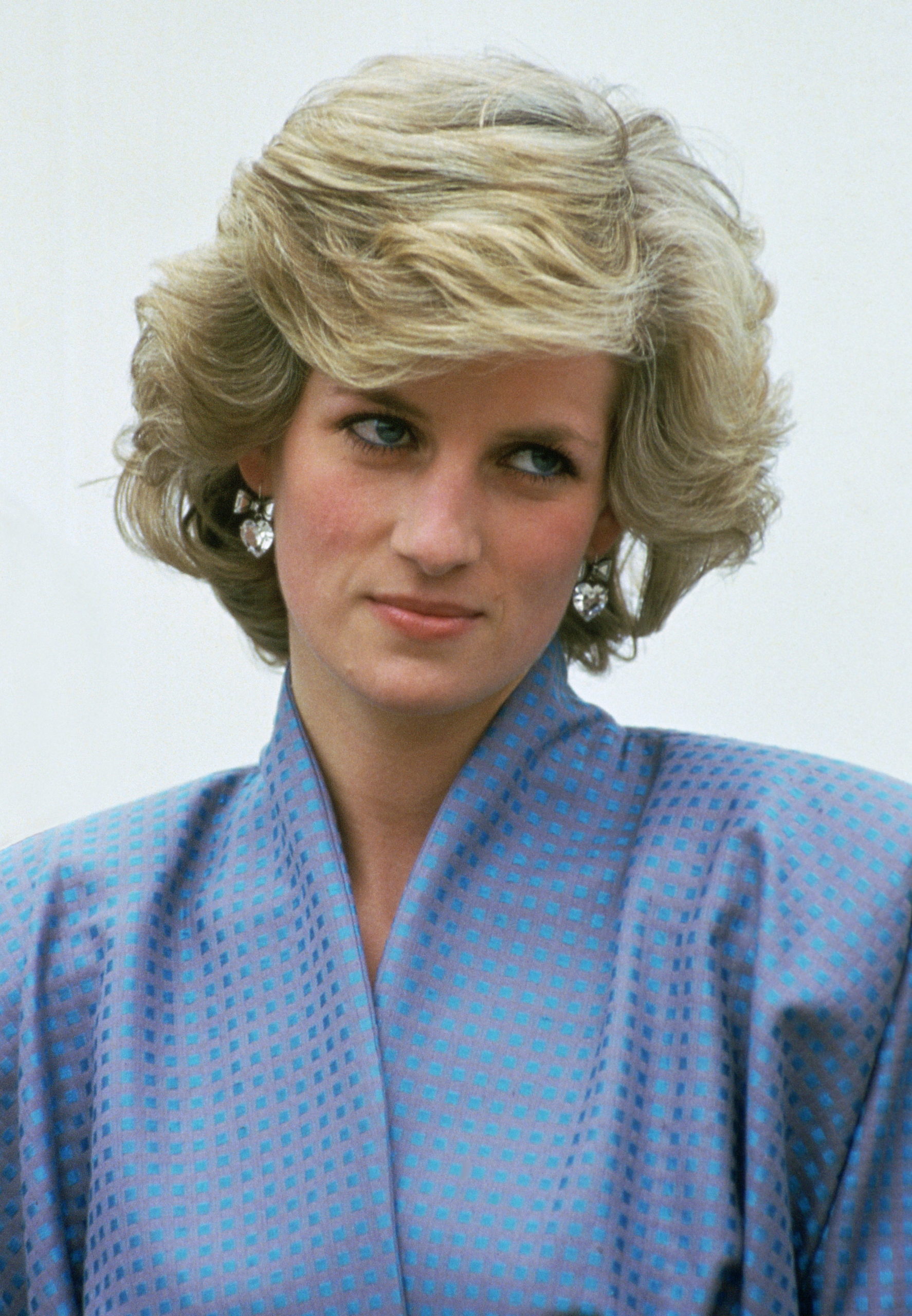 Tim Graham Photo Library via Getty Images
Tim Graham Photo Library via Getty Images
To understand the significance of Harry’s words, one must first revisit the story behind the original Diana photo. In February 1992, Diana, Princess of Wales, visited the Taj Mahal during a royal tour of India. At the time, her marriage to Prince Charles was already reported to be in trouble. Charles and Diana had traveled separately in India, each undertaking their own engagements. On that day, Charles was occupied elsewhere, leaving Diana to visit the monumental tomb alone. The resulting image—Diana perched quietly on a bench with the pristine white dome rising behind her—proved to be a visual encapsulation of loneliness, at least in the eyes of many observers. The picture resonated worldwide, seeming to hint at the solitary position the princess found herself in within her marriage. Just months later, Diana and Charles announced their separation.
The Taj Mahal itself is one of the world’s great architectural marvels. Completed in the mid-17th century by the Mughal Emperor Shah Jahan as a tribute to his beloved wife, Mumtaz Mahal, it stands as a testament to enduring love. A UNESCO World Heritage Site since 1982, it attracts millions of visitors each year. These travelers, enchanted by the legendary romance and the timeless beauty of the marble mausoleum, often seek to recreate famous photos and poses. Diana’s particular portrait—both regal and poignant—has long been a favorite among those who want to connect with a piece of royal history.
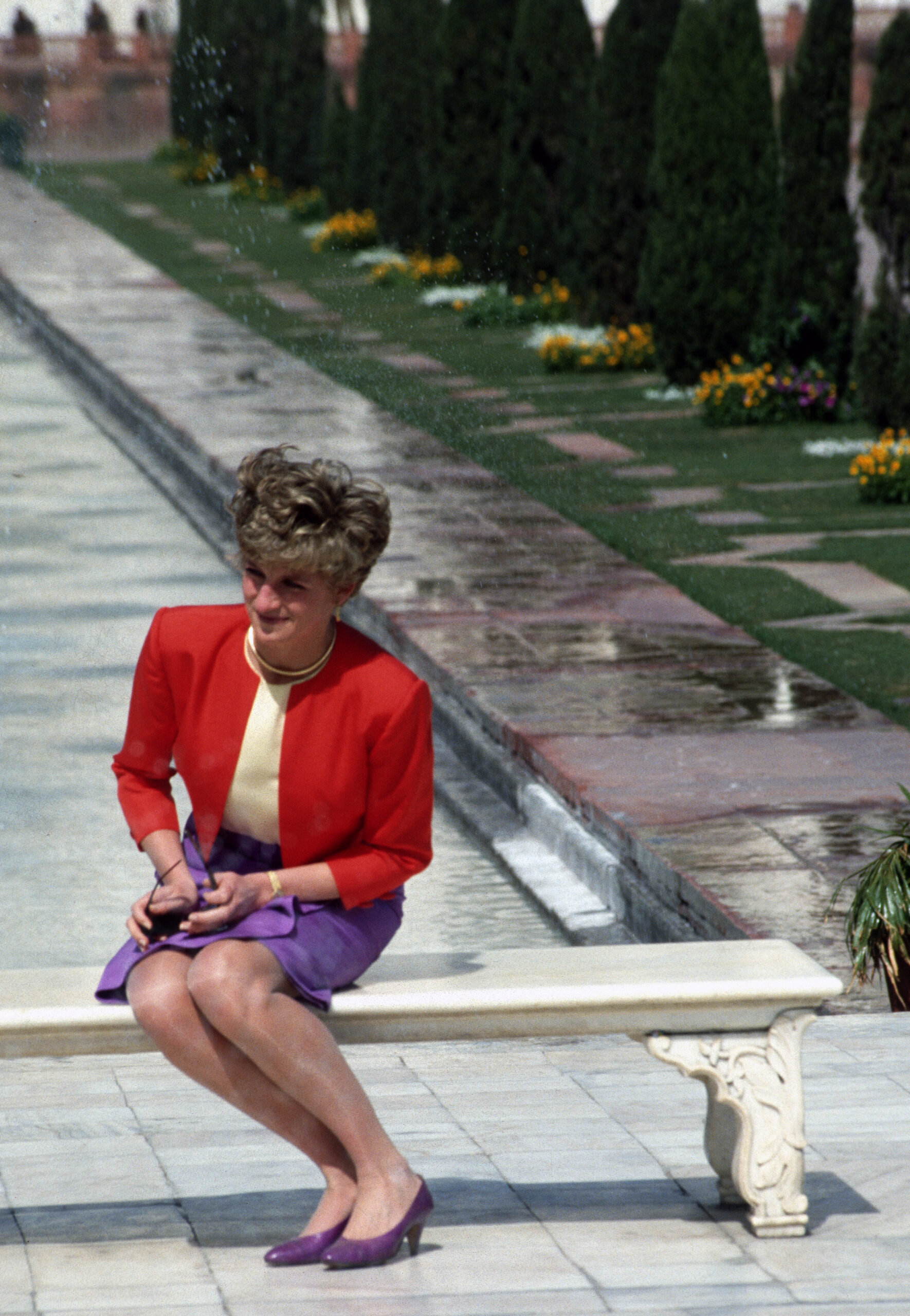 Anwar Hussein/Getty Images
Anwar Hussein/Getty Images
When Prince William and Kate visited the Taj Mahal in 2016, they too sat on the same bench, smiling for the cameras. While their photograph did not carry the same emotional weight as Diana’s, it made headlines nonetheless, linking the younger generation of royals to the beloved princess. The public noted that William’s presence by Kate’s side on that bench offered a comforting contrast to the sense of isolation so many had read into Diana’s single figure years before.
Fast forward to the mid-2010s. Before her relationship with Prince Harry became public knowledge, Meghan Markle was living a different life altogether. She was an actress on the hit television series Suits, a philanthropist, and a global traveler. Her interest in humanitarian issues led her to work with various organizations, one of them being World Vision. Through this and other philanthropic efforts, Meghan traveled widely, including to places like Rwanda. In January 2017, she embarked on a trip to India to work on projects related to education and health for young girls. While in India, she considered visiting the Taj Mahal, as so many travelers do.
Prince Harry, aware that Meghan might pay a visit to this culturally significant and photograph-rich landmark, had a request for her. As he later wrote in Spare, he asked Meghan not to take a posed picture in front of the Taj Mahal. His reason was straightforward: He knew the moment Meghan set foot on that marble platform and struck a pose similar to Diana’s, the press and public would draw comparisons. Journalists and commentators would likely suggest that Meghan was trying to emulate his mother, deliberately courting the same kind of iconic snapshot. The last thing Harry wanted was to see Meghan’s kind intentions or personal curiosity overshadowed by relentless speculation and unfavorable narratives.
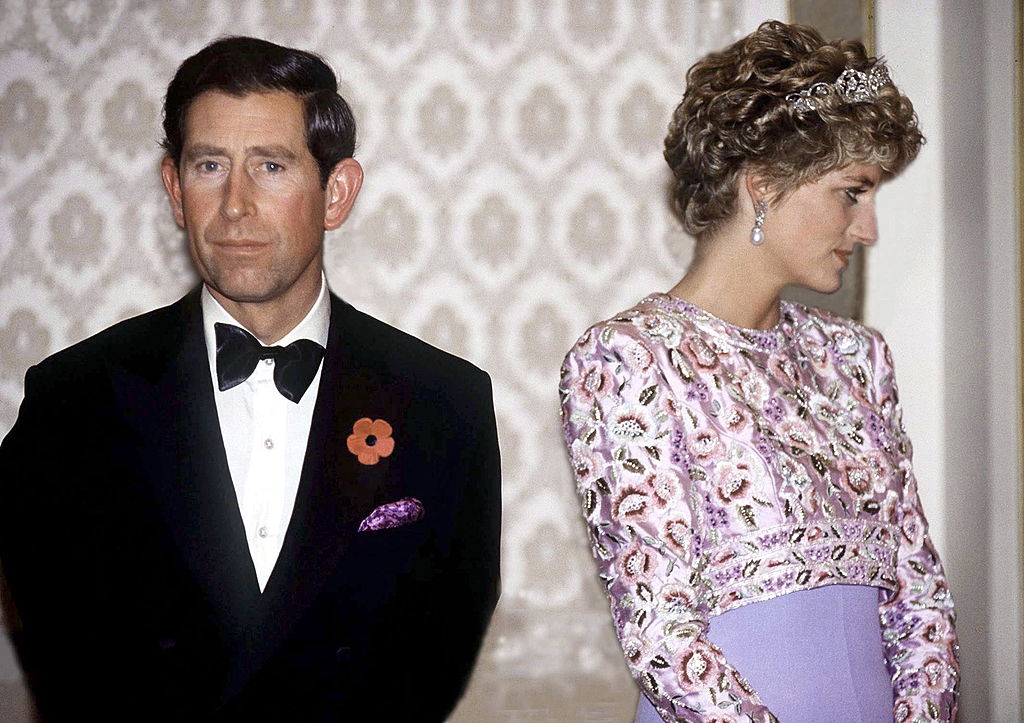
Tim Graham Photo Library via Getty Images
According to Harry’s recollection, Meghan was puzzled by his request. Having grown up in the United States and not being immersed in royal history, she didn’t fully understand why this particular photograph carried so much baggage. She knew of Princess Diana, of course. She understood that Diana was deeply loved and that Harry was fiercely protective of his mother’s memory. But the intensity of meaning behind that single image at the Taj Mahal was something Harry had to explain to her.
Meghan’s reaction, as Harry described, was one of genuine surprise. She found the situation baffling, not because she intended to mimic Diana or disregard Harry’s feelings, but because it seemed inconceivable to her that a simple snapshot could carry such weight and stir such controversy. Meghan, at that point in her life, was accustomed to being photographed both as an actress and as a humanitarian volunteer. She’d posed in front of landmarks before without anyone accusing her of hidden agendas. Yet the world she was about to enter—the realm of British royalty—operated under entirely different rules of perception and interpretation.
This anecdote underlines a crucial aspect of Harry and Meghan’s early interactions with the media and the public. From the start, Harry was keenly aware that Meghan’s every move would be dissected, compared, and sometimes even weaponized in the tabloids. He knew his mother’s history all too well, having watched Diana’s life become fodder for paparazzi and gossip columns. The memory of Diana’s struggles with the press was fresh in his mind, fueling his protective instincts. By advising Meghan against taking that photo, he wasn’t just making a suggestion about one picture—he was cautioning her against stepping unwittingly into a narrative minefield.
 AGRA, INDIA – APRIL 16: Prince William, Duke of Cambridge and Catherine, Duchess of Cambridge pose in front of the Taj Mahal on April 16, 2016 in Agra, India. (Photo by Samir Hussein/Pool/WireImage)
AGRA, INDIA – APRIL 16: Prince William, Duke of Cambridge and Catherine, Duchess of Cambridge pose in front of the Taj Mahal on April 16, 2016 in Agra, India. (Photo by Samir Hussein/Pool/WireImage)
In the end, Meghan chose not to pose outside the Taj Mahal in that now-famous seat. There are no images of her sitting alone on “Lady Di’s Chair,” gazing pensively at the magnificent marble structure. Instead, Meghan’s trip to India focused on the real purpose of her visit: working with community-based organizations, speaking to women and girls about their challenges, and highlighting issues of social justice. Rather than walking away from the Taj Mahal with a cleverly staged royal homage, she left with a deeper understanding of the people she met and the projects she supported.
When Spare was released, readers gained many insights into the private conversations Harry and Meghan had behind the scenes. Among them was this small but telling moment regarding the Taj Mahal. Their exchange encapsulates the often-unseen decision-making processes at work in the background, long before an official engagement or a public photograph is taken. For Harry, protecting Meghan from unfair comparisons and media traps was paramount; for Meghan, learning the depth of meaning behind certain iconic royal images was part of adjusting to a life she never initially imagined.
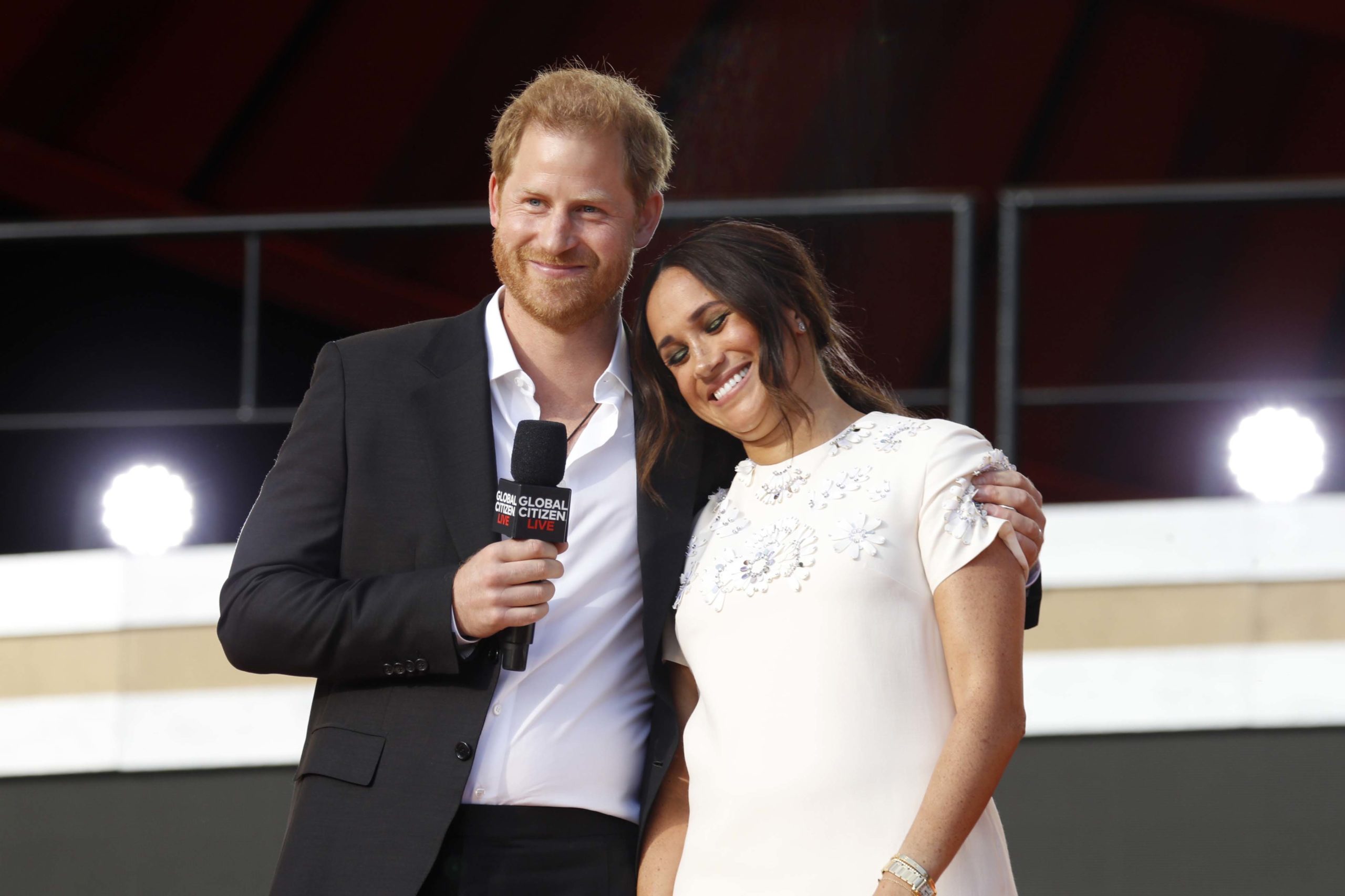 John Lamparski/Getty Images
John Lamparski/Getty Images
Prince Diana’s legacy continues to influence how the world perceives and judges the Royal Family. William and Kate’s 2016 photo at the Taj Mahal brought gentle echoes of the past, but they were a well-established royal couple by then. For Harry and Meghan, poised at that delicate stage of their courtship, such echoes could have quickly amplified into loud and distracting commentary. Harry’s caution helped ensure that didn’t happen.
In hindsight, this small anecdote offers a glimpse into the couple’s earliest struggles with external perceptions. It foreshadows some of the bigger battles they would later face as husband and wife, working royals, and eventually as two individuals stepping away from senior royal duties. Even before Meghan married Harry, they were confronted with the reality that every gesture could be interpreted through a lens colored by decades of royal history and the public’s collective memory.
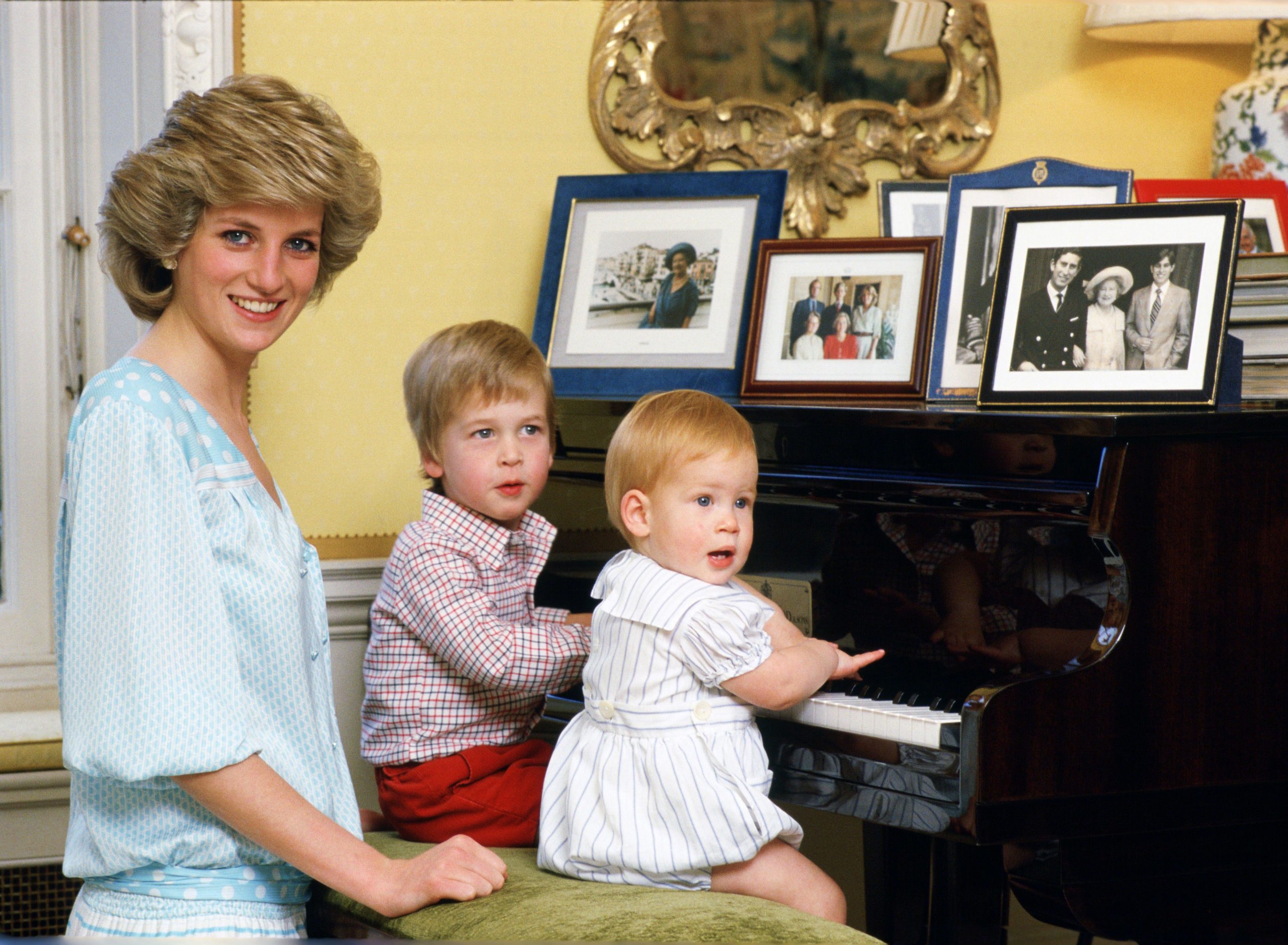 Tim Graham Photo Library via Getty Images
Tim Graham Photo Library via Getty Images
What remains clear is that Diana’s presence looms large, both in the global imagination and in the decisions her sons make. Harry’s request was rooted in respect for his mother’s memory and a desire to spare Meghan from a narrative that would overshadow her individuality. For Meghan, the moment signaled just how intricately woven royal symbolism and media representation can be. By choosing not to sit on that bench, she sidestepped a storyline that might have set the tone for her future public image—an image Harry dearly hoped to protect.
As time moved forward and Harry and Meghan’s story took turns no one could have predicted, the Taj Mahal anecdote now stands as a quiet reminder that from the beginning, they were navigating a world filled with echoes of the past. In that sense, the lesson Harry imparted to Meghan was about more than just a photo. It was about understanding that, in the royal sphere, no image is ever just a snapshot—and that their journey would be shaped as much by what they chose not to do as by what they did.





